Did you know a dog’s sense of smell is up to 100,000 times more sensitive than ours—and some can even track scent trails days old? That super-sniffing ability isn’t just impressive; it’s instinctual. But what happens when you combine that sharp nose with a loyal heart? You get the ultimate partner: a companion dog breed.
These dogs aren’t just incredible trackers—they’re also fiercely devoted to their humans. Whether they’re following a trail through the woods or sticking close on the couch, these dogs live to connect, protect, and serve. Perfect for outdoor enthusiasts, search-and-rescue hopefuls, or anyone craving a smart, active, and loyal dog, these breeds bring the best of both worlds.
In this blog, we’ll explore the excellent companion and tracking dog breeds that offer more than companionship—they offer purpose, passion, and an unbreakable bond that follows you wherever the trail leads.
Companion Tracking Dog Breeds
1. German Shorthaired Pointer
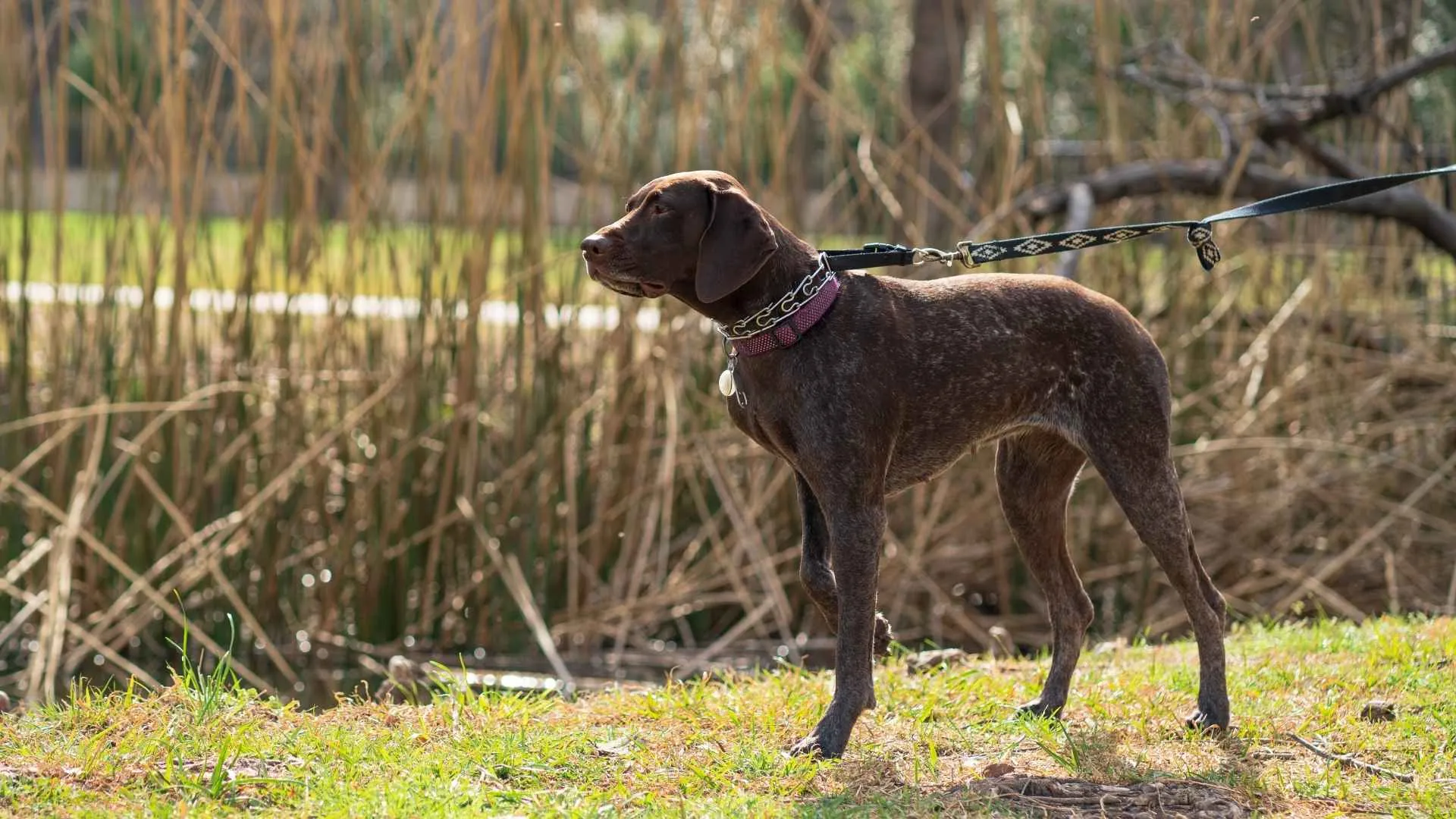
The German Shorthaired Pointer (GSP) was developed in late 19th-century Germany as a versatile hunting dog that could also serve as a loyal family companion. Breeders succeeded in creating a breed that is both athletic and affectionate, making the GSP a popular choice for hunters and active households alike.
Renowned for their exceptional versatility, German Shorthaired Pointers are natural multitaskers in the field. They can hunt, point, and retrieve various types of game, including birds, rabbits, raccoons, and even deer. Their keen senses, natural instincts, and adaptability make them standout performers in a wide range of hunting environments.
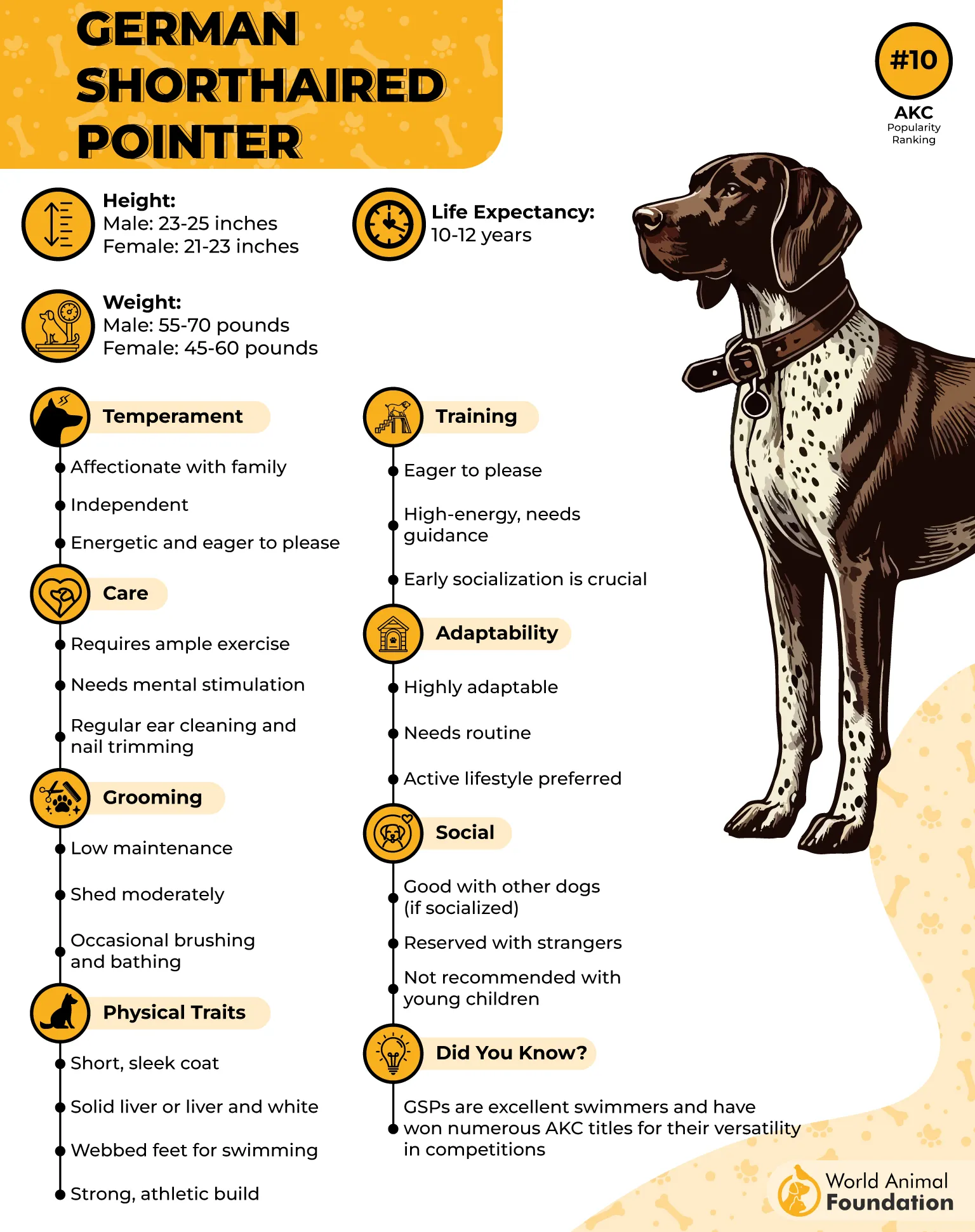
With their strong prey drive, GSPs are quick to react to movement or scent from nearby wildlife. This can make off-leash outings a challenge, as they may be tempted to chase or escape enclosures. Proper fencing and vigilance are essential when outdoors, especially in areas with small animals.
At home, GSPs are affectionate and loyal and generally get along well with children and other dogs. However, their high energy levels can be overwhelming for toddlers or younger kids. Families with older children tend to be a better fit, especially if the household can match the dog’s exercise needs.
Grooming a GSP is relatively low-maintenance, but shedding can be noticeable, especially in warmer regions where it may occur year-round. Using grooming gloves or rubber brushes several times a week can help control the short hairs that often embed themselves in fabrics and flooring.
As noted by AKC, an iconic trait of this breed is their natural ability to “point.” This behavior—lifting a paw and aiming their nose toward prey—is instinctive and highly valued in hunting breeds. It’s believed to have originated from the now-extinct Old Spanish Pointer, one of the foundational breeds behind modern pointers.
2. Labrador Retriever
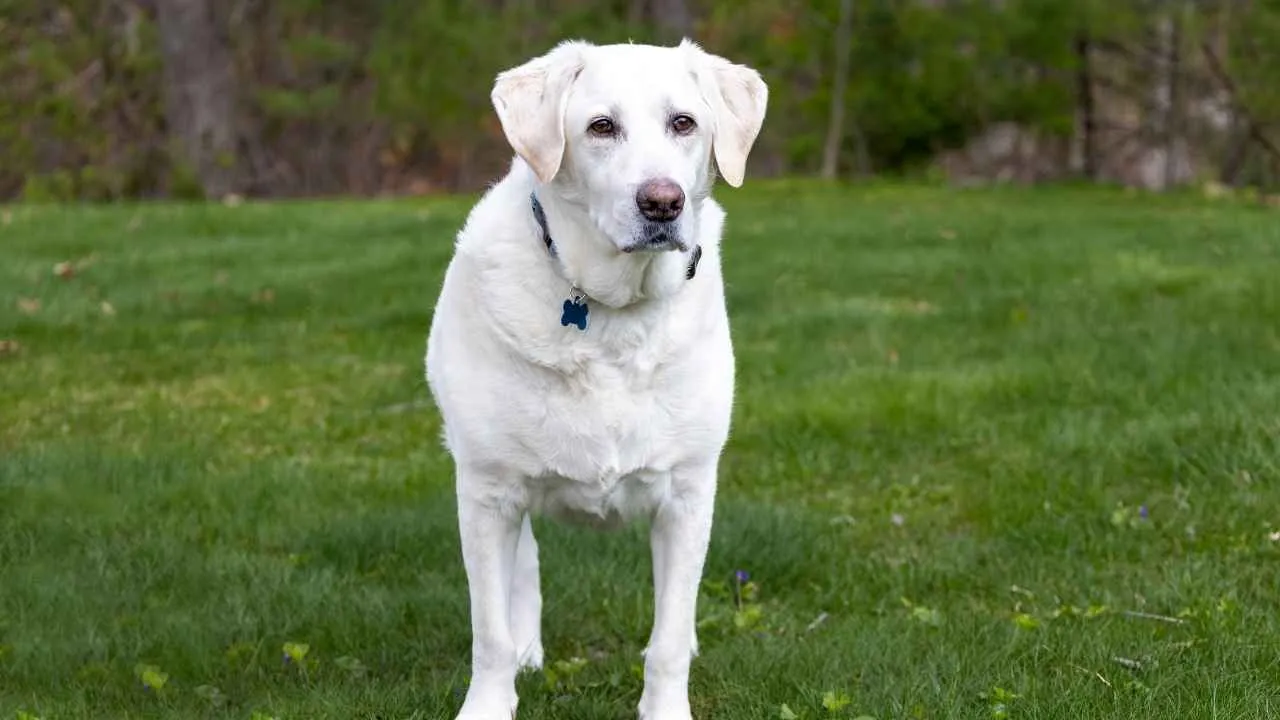
The Labrador Retriever, despite its name, originated in Newfoundland rather than Labrador. It was developed from fishing dogs brought to England around 1800, where it was refined into the breed we know today. Labradors are strongly built with relatively short legs, a dense, water-resistant coat in black, chocolate, or yellow, and a thick, tapering “otter tail” used as a rudder when swimming.
Originally bred for retrieving game and working in harsh aquatic environments, the Labrador’s temperament reflects its rugged roots. It’s energetic, obedient, and has exceptional retrieving skills. This stamina and ability to follow commands from a distance were vital for hunting in challenging terrain or open waters.
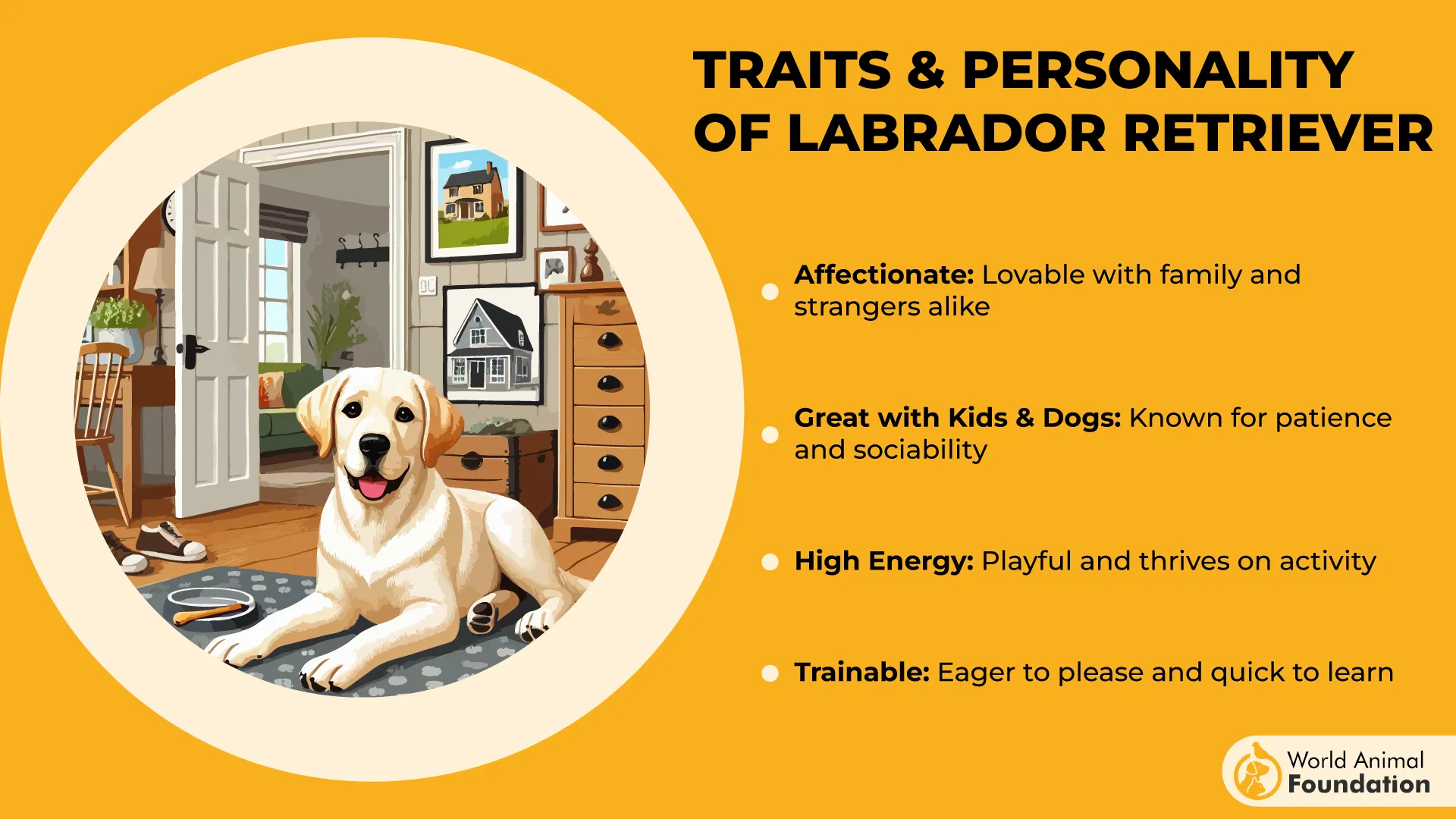
Labradors have become one of the most beloved family companions, especially in the United States, where they held the top spot as the American Kennel Club’s most-registered breed for 31 consecutive years. Their friendly, even-tempered nature makes them ideal for households with children or other pets.
These dogs are remarkably intelligent and cooperative, making them exceptional working animals. Labradors are frequently chosen for service roles such as guide dogs for the visually impaired, police work, search and rescue missions, and emotional support or therapy tasks.
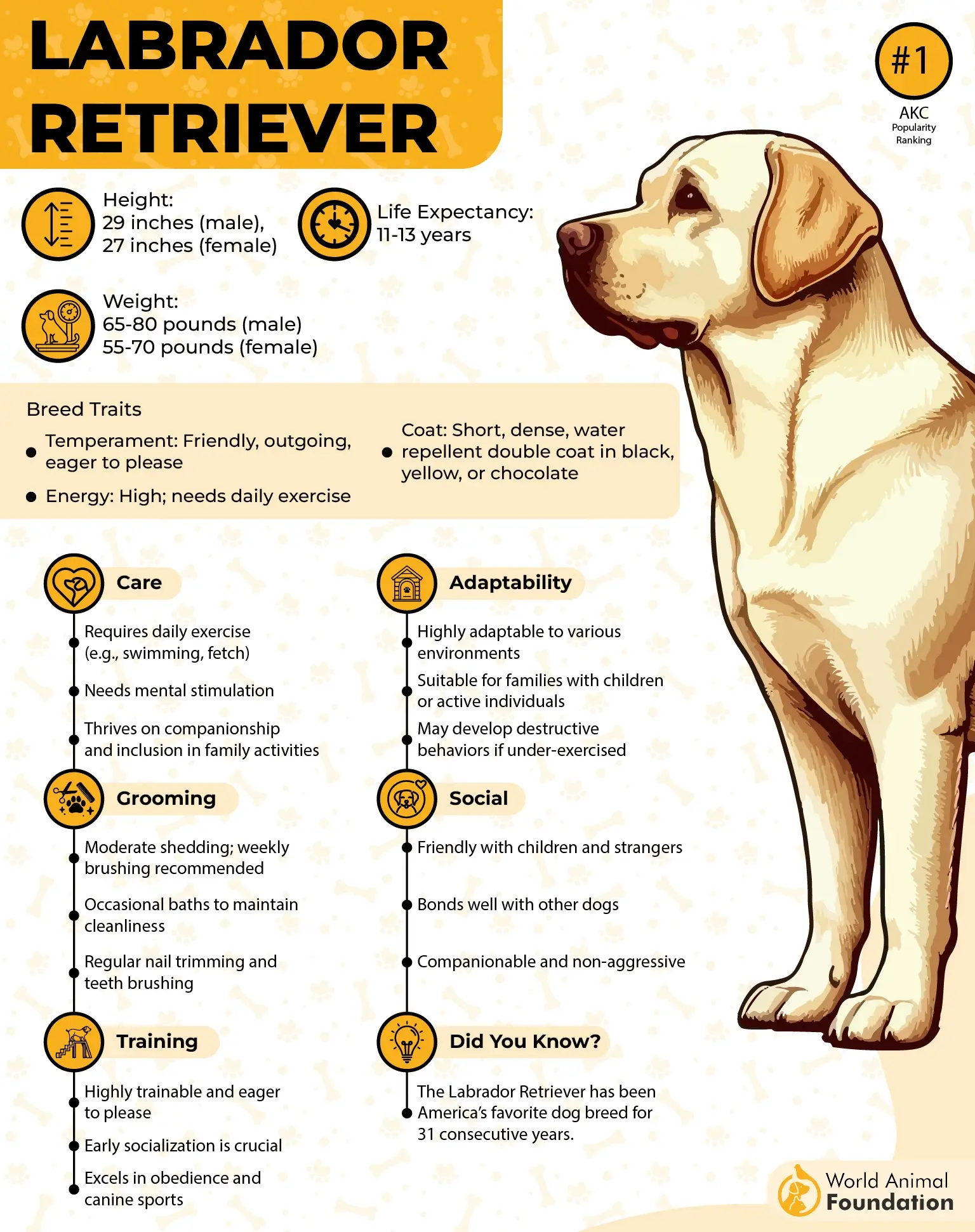
One standout Labrador, a yellow service dog named Endal, gained global recognition after saving his owner’s life in 2001 by performing a series of intelligent, lifesaving actions. He had already earned the title of Dog of the Millennium before that incident, showcasing just how extraordinary the breed’s loyalty and intelligence can be.
They require consistent training and regular physical activity to channel their energy and prevent destructive behavior. Their easygoing nature, however, makes them highly adaptable to both active outdoor lifestyles and relaxed home environments.
Labradors typically live 10–12 years and stand between 21.5–24.5 inches tall, weighing 55–80 pounds. As both working dogs and family pets, they remain one of the most versatile and admired breeds in the world.
3. English Springer Spaniel
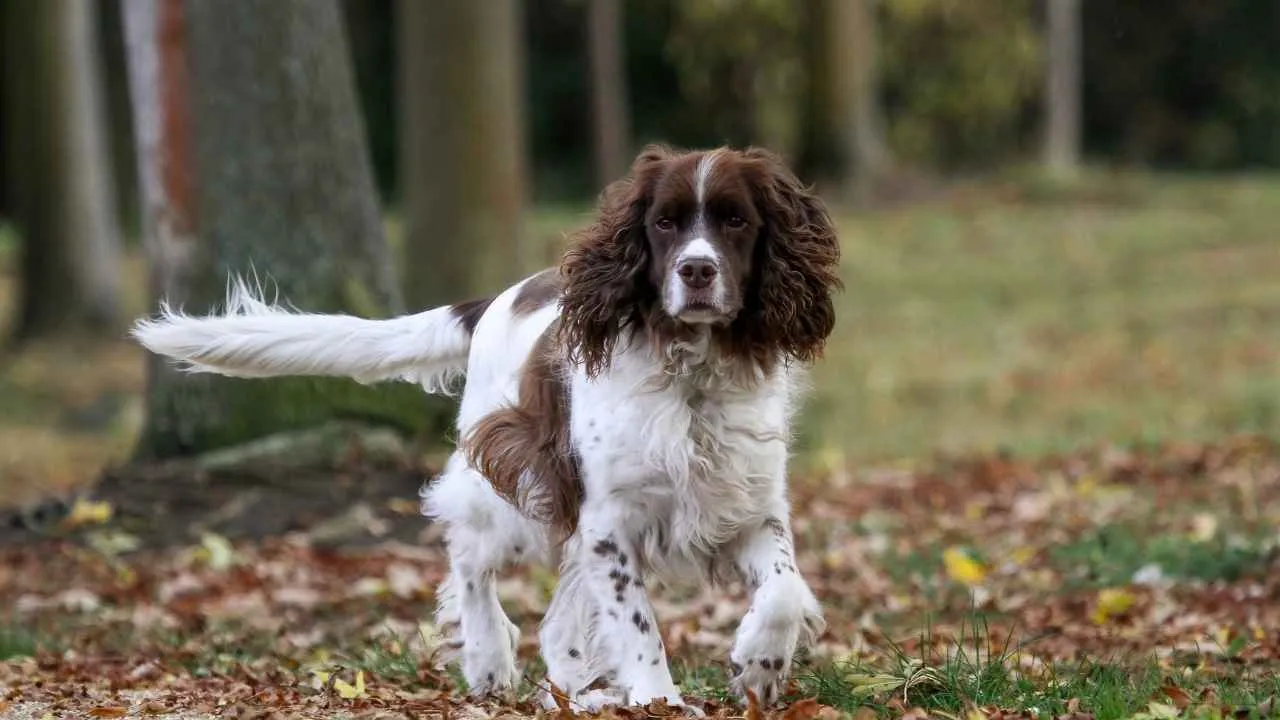
The English Springer Spaniel is a well-proportioned, athletic breed known for its wavy, feathered coat—often white with liver, black, or tan markings—and expressive dark eyes. It features a deep chest for stamina, long pendant ears, and a moderate muzzle. This breed thrives in water and enjoys muddy play, reflecting its natural love for outdoor activity.
Historically, the English Springer Spaniel has been a favored gun dog since Tudor times, especially under the reign of Henry VIII. WebMD states that the breed name comes from its role in the “springing” game—flushing birds or small animals from cover for hunters.
Belonging to the gun dog group, it shares lineage with retrievers, pointers, setters, and other spaniels. Its reputation grew during the Renaissance, especially among the aristocracy.
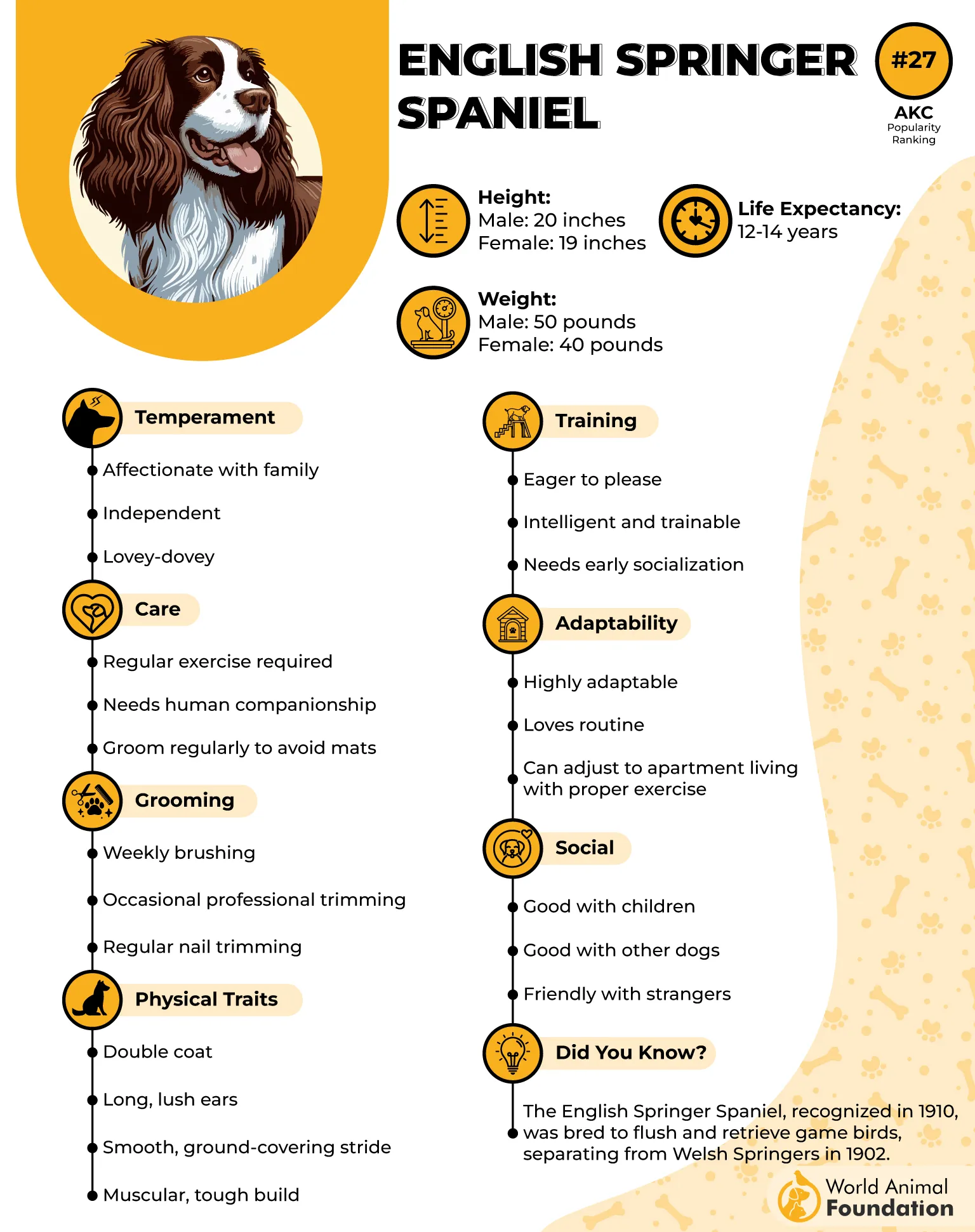
The breed has two distinct types: field and show. Though they can come from the same litter, working and show Springers differ significantly in appearance and build due to specialized breeding. Working types are typically leaner and more athletic, while show types often have heavier coats and a more robust frame.
Springer Spaniels need consistent, moderate exercise and physical and mental stimulation to stay healthy. While they’re capable of working long hours in the field, they also adapt well to home life if given daily activities like walks, fetch, or swimming. A fenced yard is ideal, but they can live comfortably in apartments if their exercise needs are met.
These dogs are highly sociable and form strong bonds with their owners. They thrive on companionship and dislike being left alone for long periods, often developing separation anxiety if isolated. Their affectionate and eager-to-please nature makes them highly trainable, and they respond well to consistent positive reinforcement.
Springers are generally good with older children, other dogs, and even strangers, but their boisterousness can be overwhelming for younger kids who may not know how to interact with them. They’re intelligent communicators and often seek interaction and attention from their families.
4. Vizsla
The Vizsla is a striking breed known for its unique golden-russet coat, red nose, and matching skin around the eyes—a combination that sets it apart from other dogs. Black pigment is considered a fault in this breed.
Originally bred by the Magyar people in the 9th century, Vizslas were developed for speed, endurance, and hunting prowess. Historical records of the breed date back to 1357, and they’ve survived centuries of conflict, including wars and occupations, and nearly faced extinction after World War II.
Often nicknamed the “Velcro dog,” the Vizsla is renowned for its intense loyalty and attachment to its human companions. They’re rarely far from their owner’s side, following them from room to room and even into the bathroom. Though medium-sized, they love close contact and often seek out lap time, craving physical affection and attention.
Purina states Vizslas are energetic, athletic dogs that require daily physical activity and mental engagement. They excel in outdoor adventures such as hiking, swimming, hunting trips and field sports like flyball and tracking. Without adequate exercise, they may develop destructive habits like excessive barking, chewing, or scratching at doors. This makes them better suited to homes with access to large yards or open spaces rather than apartment living.
Because of their size and energy, Vizslas may accidentally overwhelm small children, though they are affectionate and do well with older kids. Early socialization with people, other animals, and varied environments is key to shaping a well-adjusted adult dog.
While highly intelligent and eager to please, Vizslas can be strong-willed and somewhat shy without early confidence-building experiences. They are naturally vocal, communicating through barks, whines, moans, and grunts to express a wide range of emotions or needs.
These dogs thrive in households where they are included in daily activities, both active and relaxed. A Vizsla will happily run all day and then settle in for cuddles in the evening. Their blend of athleticism, affection, and elegance continues to boost their popularity—they now rank 31st out of 193 breeds, according to the American Kennel Club.
5. Beagle
The Beagle is a friendly, cheerful breed known for its playful and adventurous nature. Originally bred to hunt in packs, Beagles typically get along well with other dogs and pets, making them ideal family companions. Their gentle and sociable disposition allows them to bond easily with both humans and animals. Still, their strong independence and tendency to get distracted can make training a bit of a challenge.
Although active outdoors, Beagles can adapt well to indoor living if they receive enough mental and physical stimulation. When left alone for extended periods, they may become destructive or vocal, behaviors rooted in boredom or loneliness. While they’re fairly alert and make decent watchdogs, due to their amiable nature, they are not well-suited as family guard dogs.
A signature trait of the breed is the white tip on their tails, often referred to as a “flag.” This distinctive feature had a practical use during hunting—it allowed owners to spot their dogs easily in dense brush or tall grass. Beagles were especially prized for rabbit hunting in England, a practice called “beagling,” which involved following packs of these agile hounds on foot.
Historically, Beagles also held a place in royal courts. Queen Elizabeth I was known to own “pocket beagles”—a miniature version of the breed standing just 8 to 9 inches tall. These tiny, loving companions, sometimes referred to as “glove beagles,” were adored for their petite size and charming demeanor.
As noted by CitizenShipper, Beagles are renowned for their strong sense of smell, which ranks just behind the Bloodhound in sensitivity. With approximately 220 million scent receptors, they excel in tracking and scent detection. This trait has made them valuable not only in hunting but also in detection work for customs and law enforcement.
Another notable trait is the Beagle’s powerful howl, which can carry over long distances—sometimes up to a mile. This distinctive vocalization has its roots in the breed’s hunting heritage, where howling was used to alert hunters to their location or signal the presence of game.
6. Irish Setter
The Irish Setter is a striking sporting breed best known for its rich mahogany coat and graceful, athletic build. With a sleek, feathered appearance and long legs, it stands out for both elegance and agility. Developed in 18th-century Ireland from a blend of setters, spaniels, and pointers, it was originally bred for bird hunting. These dogs would “set” or freeze to point out game, allowing hunters to capture prey with nets before firearms became widespread.
This large, swift breed typically weighs between 60 to 70 pounds and measures around 25 to 27 inches tall. Its silky, straight coat features distinctive feathering around the chest, legs, tail, and ears.
While today’s Irish Setters are solid red, they were once red and white—traits that now belong to a separate breed, the Irish Red and White Setter, which remains rare and endangered in the UK.
Irish Setters are well-loved for their joyful, affectionate temperament. They are particularly playful and energetic, thriving in active households. Their friendly nature makes them unsuitable as guard dogs, as they warmly greet both strangers and familiar faces. While they bond well with children, their exuberance, especially in puppyhood, can unintentionally overwhelm very small kids.
One hallmark of the breed is its prolonged puppy-like phase. Irish Setters mature slowly and need consistent, early obedience training. Though sometimes mistaken for being hard to train, they’re intelligent and eager to learn, just a bit headstrong. Positive reinforcement and patience go a long way in helping these dogs become well-mannered companions.
Their need for mental and physical stimulation is high, and they excel at games like fetch. Being bred for speed and stamina, they require daily exercise to stay balanced and content. A bored Irish Setter can become unruly, so families should be prepared for regular activity and engagement.
Recognized by the UK Kennel Club in 1914, the modern Irish Setter has become a beloved family dog around the world. Its heritage as a working gundog and its show-stopping appearance continue to make it a popular choice among dog lovers seeking both beauty and personality in a pet.
7. Brittany
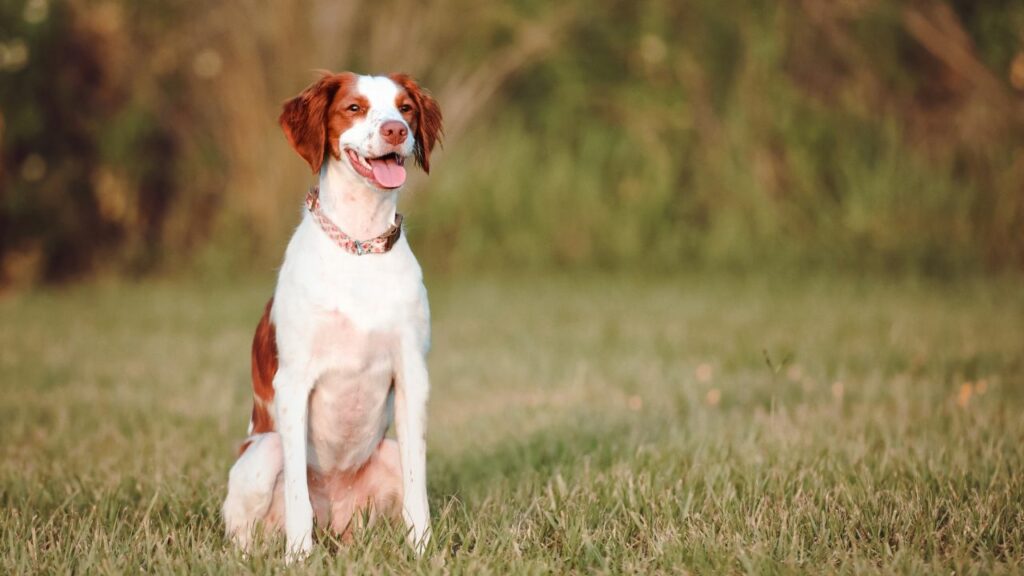
The Brittany, formerly known as the Brittany Spaniel, is a compact, energetic breed originally developed in the Brittany region of France during the 1800s. Standing about 17–20 inches tall and weighing 30–40 pounds, this medium-sized dog was bred for hunting but is equally known for its affectionate nature and suitability as a family companion.
Highly valued for their versatility, Brittanys excel in a range of environments. With a protective coat and boundless stamina, they are ideal bird dogs capable of pointing, flushing, and retrieving both on land and in water. Their size keeps them within close range of hunters, which historically made them popular with medieval poachers and game seekers.
In 1982, the American Kennel Club officially shortened the breed’s name from Brittany Spaniel to just Brittany, reflecting their hunting style. Unlike flushing spaniels, Brittanys are pointing dogs—alerting hunters to the game without disturbing it, a key trait that distinguishes them from other sporting breeds.
Beyond their hunting skills, Brittanys thrive in competitive dog sports. Their intelligence and eagerness to please make them stand out in agility courses, flyball events, and other high-energy challenges. Their trainability and enthusiasm often mean they’re game for nearly any activity that engages their sharp minds and athletic bodies.
The breed holds a unique distinction in the dog world: Brittanys have earned more Dual Champion titles than any other in the Sporting Group. This elite designation is awarded to dogs who have proven themselves in both show conformation and field trials, showcasing their all-around excellence.
With naturally high energy levels, Brittanys require regular, vigorous physical activity. At least an hour a day of off-leash play, running, or training is essential to their well-being. They’re happiest when they can share their love of movement with active families or individuals who enjoy the outdoors.
Though athletic, Brittanys are also soft-natured and affectionate. Their sensitivity and sociable temperament make them great snugglers after a long day’s work or play. For those seeking a dog that’s as loving at home as it is dynamic in the field, the Brittany is a well-balanced and rewarding choice.
Conclusion
Companion-tracking dog breeds are more than just skilled hunters—they’re dedicated companions and great family pets that bring energy, loyalty, and joy to any home. Whether you’re drawn to the Golden Retriever for its friendly nature and ability to retrieve waterfowl, the Beagle with its long ears and love for hunting small game, or the courageous German Shepherd, these popular breeds are known for their strong breed characteristics and deep bonds with their humans.
From duck hunting with a Chesapeake Bay Retriever to tracking mountain lions with a Mountain Cur or simply enjoying the company of lap dogs and happy-go-lucky pups, there’s a perfect match for every lifestyle. These high-energy dogs thrive with enough exercise, love working through harsh conditions, and make great companions both in the field and at home.
Whether you’re seeking a great hunting dog, a loving family pet, or a mix of both, these active dogs have proven for nearly two decades to be among the best breeds for those wanting a loyal hunting partner and a furry family member.

